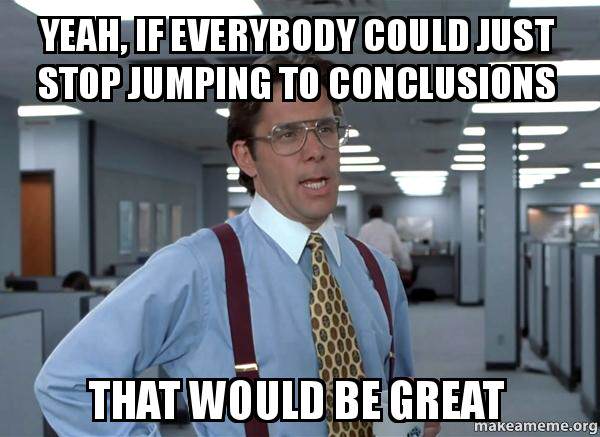Change is in the air, or at least on the minds of American football fans, political junkies, and those looking at making that big New Year’s resolution. It seems that change has always and will always be a hot topic. In other words, nothing has changed in regards to change. So why is it that change is so intriguing yet elusive to us all? Oddly enough, the answer may be found in a topic at the forefront of American culture, college football.
While there is a long history of teams in the Midwest, particularly the Big Ten, being powerhouses, this hasn’t been the case in recent years. In fact, most recently the landscape of college football has been dominated by a couple of teams on the West Coast and, to a larger extent, in the Deep South. Looking at the era from 1998-2013, the national champions have resided either in Southern California or the South 15 of 16 years, with the lone exception being Ohio State in 2002. If you asked the experts, this was less of a cyclical trend and more of a shift into what the future of college football would look like from now on. However, the last two years shows that may be changing.
What’s Behind It?
One reason that so many struggle with change is that they fail to understand the basic mechanisms behind it, simply floating adrift in the winds of change with no means for navigation. Let’s looks at three very basic mechanisms of change and how we can use them in driving change in our own lives and organizations.
Acceptance of Change
We all tend to be change adverse at some level. Some of the best organizations in the world have entire departments who do nothing more than manage change within the company. One of their main functions is to determine when people are resistant to change and how to compel them to accept the change the organization is wanting to make. We’ve all had that moment in our own lives that we realized that we simply can’t keep doing things the way we’ve always done them and expect to get different results, but that doesn’t make it any easier to accept that we need to make big changes.
Over the last decade warm weather schools have dominated college football. Not only did they have a deep pool of talent located close by, they were getting some of the best players from the North to come down to warmer climates. Warm weather schools have an embarrassment of riches in talent, and they used these talents to evolve the spread offense to such impressive levels that football scores started to resemble basketball scores. Meanwhile the Big Ten continued to lag their friends to the South in recruiting and offensive numbers. The powers-that-be at these Big Ten institutions knew they had to make big changes or risk the game leaving them relevant only in history books.
Change is Rooted in Complexity
Anybody that tells you that making a change is simple and you need to just do one simple thing fails to understand what is driving the performance of people. If you’ve read many of our blogs you have seen the term complexity used quite often. Simply put, human performance happens in response to multiple stimuli. No one thing, by itself, is salient enough to sustainably drive a change in performance, instead multiple factors are almost always at play when lasting change takes effect. In fact, the performance itself is simply a byproduct of the stimuli in which people find themselves. In our blog Complexity and Local Rationality we detail that people don’t behave in certain ways simply because that’s what they want to do but because that’s what seems to be the logical thing to do given their context. In other words, getting people to want to change is far less important than helping them see that change is actually the logical thing to do and helping them understand that when the change is made it will take changing several factors to make the change stick.
In 2014 Ohio State was ranked #16 in the first College Football Playoff Poll. After an opening week loss to Virginia Tech they had become an afterthought in terms of playing for a national championship. Two months later they soundly beat an Oregon team to win the national championship, stopping a 7 year streak of SEC teams winning the national title. In the 2015 season not only Ohio State, but Michigan State, Iowa, and Northwestern are ranked in the top 14 teams in the country at the end of the regular season, making the Big Ten arguably the dominant conference in college football. Where did this change come from so fast? The answer is nebulous but can be argued that many things led to this change. Former Northwestern Graduate Assistant coach Kenji Jackson says he saw several things happen over the last few years that has changed the way Big Ten football recruits players and performs on the field.
- Several assistant coaches hired from the South brought their recruiting networks with them
- Satellite camps from Big Ten schools held in the Deep South in Summers to recruit the best from that region
- Lowering of academic standards in some Big Ten schools
- Social media and video sharing tools such as Twitter and Hudl where recruits could gain instant access to college coaches around the country
- A change in offensive philosophies in the Big Ten that has coupled the fast paced spread offense with the traditional smash mouth run game.
These were just a few of the examples that Coach Jackson immediately saw happening in the Big Ten the last few years. While there is no measurable correlation, each of these probably have impacted the resurgence of Big 10 football.
Agents of Change
To drive change in organizations you have to have the right person/people at the wheel. This doesn’t necessarily mean you have to have a CEO that drives the change throughout the organization, you simply have to identify the right people, the social centers of gravity, that will intentionally drive the change. This could be senior leadership, front line supervisors, key front line employees, or any combination of the above. However, you have to find the right person/people who know the vision of where the organization wants to go and who have the hearts and minds of the masses to make them follow.
In the case of the Big Ten nobody has driven this change more than Urban Meyer. Coach Meyer has been successful at every stop, from Bowling Green, to Utah, to Florida, and ultimately Ohio State. He not only brought a fresh perspective for running a cutting edge new offense to the league, he brought new blood with his coaches and players that he recruited from outside the region, and viewership that meant more TV dollars that help all of the teams in recruiting.
One of the biggest aspects of change that Coach Meyer brought to Ohio State was the willingness to change. Braxton Miller was the starting QB when the season started in their championship season of 2014 but missed the majority of the season due to injury. When he returned in 2015 he was asked to move to receiver and did so. Now none of us on the outside know how that change was received at first but the change was made and Braxton Miller has played exceptionally well at the position and will probably be playing receiver in the NFL next season. He built the blueprint for winning in the Big Ten in modern day football and other teams have benefited by following that blue print while putting their own tweaks in the plan itself.
The Real World
What does this have to do with making change in my own life or in my company you may ask. This analogy is not just the musings of a college football fan but a case study in how we can all drive big change in performance across dynamic and complex organizations. There are more aspects to change than just these three points but if we can start to understand how a loosely jointed group of higher learning institutions changed the way America views their football programs we can start to understand how we get our organization to be better at changing HR software programs or adhering to a new company policy on environmental record keeping.
First, understand that people tend to be resistant to change. This isn’t merely a weakness of the human spirit, but more likely a weakness in organizational context. We can and should compel, encourage, and reward people to accept positive change, but we can’t expect change to stick until we understand the context in which people work.
Next, understand that making change is not a one off effort. People are doing things because the context in which they work makes it locally rational to do it that way. You can’t change any one thing and create sustainable change. In Step 1 above you have encouraged your team to accept change and begun to understand the context that is driving their resistance. It will take effort and resources across the board to make changes to this context and make the change stick.
Lastly, identify the right agents of change. It may be a senior leader, a committee of front line leaders or even your front line workers but you have to find the people who see the vision, understand the strategy for making change, and who people will follow to make the change sustainable.


















